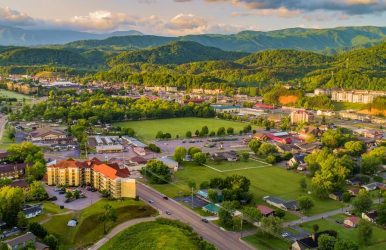What Are The Unique Things To Do In Santo Domingo, Dominican Republic? (The Site Of The First Cathedral In The Americas)
BY Sibashree Sep 8, 2025
Santo Domingo, “The Capital” of the Dominican Republic, harbors the most happening Caribbean city life along with architecture that goes back centuries. Further, with the whiff of cigars, the art galleries, and the most happening gastronomic scene, Santo Domingo offers the most vibrant experience. However, in this Tour and Travel Blog, we will discuss the Zona Colonial or the Colonial City of Santo Domingo, its unique attractions, and the things to do in Santo Domingo. The Key Areas Covered Are:What Is Santo Domingo Most Famous For? What Are The Unique Things To Do In Santo Domingo? My Ultimate Bucket List1. Visiting The Ozama Fortress2. Exploring The Colon Park3. Visiting Columbus Lighthouse4. Exploring The Ladies Street5. Feeling The Connection At Our Lady Of The Incarnation6. A Session With History At The Cathedral MuseumA Food Tour: Where To Eat In Santo Domingo?Is It Worth Visiting Santo Domingo?Things To Do In Santo Domingo: Frequently Asked Questions (FAQs) What Is Santo Domingo Most Famous For? Santo Domingo is most famous for its Colonial City of Santo Domingo. It was inscribed as a UNESCO World Heritage Site in 1990. Christopher Columbus arrived here in 1492, and after that, it became the “site of the first cathedral, hospital, customs house and university in the Americas.” It was established as a colonial town in 1498, and it is called the “First permanent establishment of the New World.” Moreover, the Dominican Republic got its capital, Santo Domingo de Guzmán, from the Colonial City of Santo Domingo. Also, with its Plaza Mayor and the unique grid pattern, it became the benchmark of new American cities. The establishments, which have especially served as the model, are: Palace of the Viceroy Real Audiencia (Royal Court of Justice) Chancery Cathedral Moreover, Santo Domingo is the place where Leyes de Indias, or the first laws of the West Indies, were first proclaimed. In addition, the social fabric, traditional architecture, and the symbolic value of the architecture and the Colonial City of Santo Domingo are well-preserved even today, standing the test of time. What Are The Unique Things To Do In Santo Domingo? My Ultimate Bucket List Visiting Santo Domingo has now become easier than ever with direct flight connectivity to Las Americas International Airport (SDQ) in Santo Domingo from CDMX or Ciudad de México. So, there will not be annoying stopovers, and the journey will be more comfortable. Nevertheless, once you reach the first city of the New World, you can explore the following iconic landmarks. 1. Visiting The Ozama Fortress A Spanish architecture built under the guidance of Fray Nicolás de Ovando, the Ozama Fortress has a quintessential medieval vibe. Many people refer to this as the “Walled Fortress,” as it is, of course, the “first permanent military structure in America.” The 21-meter central tower of the fortress stands tall, while the canons facing the Ozama River, which were used to drive the pirates away, are still inside the fortress. 2. Exploring The Colon Park Parque Colón or the Plaza de Mayor is the epicenter of the Colonial City of Santo Domingo. It has an impressive statue of Columbus in the middle, and it is surrounded by the iconic architecture of the Colonial City, such as the Cathedral of Santo Domingo and the Cathedral Museum. Every corner of this place is Insta-worthy. 3. Visiting Columbus Lighthouse El Faro a Colón or the Columbus Lighthouse is a 37-meters high architecture, honoring Christopher Columbus, the man who discovered America. The cross-shape of this lighthouse refers to America’s Christianization. John Paul II inaugurated this structure in 1992, and today it is a museum and a popular venue for conferences and temporary exhibitions. 4. Exploring The Ladies Street Las Damas Street or Ladies Street has the distinction of being the “first street of the colonial city.” The government of Nicolás de Ovando built this street. It got its name as ladies used to walk here, and today, the street has notable locations such as the Trampolín Museum, House of Hernán Cortés, and the Cocoa Museum. 5. Feeling The Connection At Our Lady Of The Incarnation The Minor Basilica of Santa María de la Encarnación, or the Primate Cathedral of America, Our Lady Of The Incarnation Cathedral, impresses with its unique Gothic architecture. Inside the church, you will find Pagan, Christian, and Apostolic details. 6. A Session With History At The Cathedral Museum The Cathedral Museum celebrates the history of the First Cathedral of America through exhibits and objects related to the cathedral. This museum has candelabras, paintings, and many other exhibits dating from the 16th to the 19th century. The museum also has a souvenir shop for collectibles. A Food Tour: Where To Eat In Santo Domingo? View this post on Instagram A post shared by Ajualä (@ajualard) Santo Domingo has many cafes and eateries, especially around the Plaza Mayor. However, if you are looking for a fine dining experience, you can try the following places. Places to Eat in Santo DomingoAddress and Contact DetailsSpecialtyMorisoñandoAddress: Las Américas Int'l Airport, Route 66, Cargo CityPhone: +1 829-659-5555 / Dominican Cuisines such as Travesía Callejera and Lambi. AjualäAddress: Calle Andrés Julio Aybar 13, Santo DomingoTelephone: +1 829-545-7503• Creole Duck• Kingfish Eyes• White Fish with Wild MushroomsLarimarAddress: Torre Altri Tempi , Av. Roberto Pastoriza 412, Santo DomingoTelephone: +1 849-449-1394• Shrimp Rice and Crab• “Black Truffle Cream with Mushroom Threads” Is It Worth Visiting Santo Domingo? Yes, Santo Domingo is worth visiting. There is something astonishing about how the city, with its colonial past in its heart, grows as one of the vibrant epicenters of Caribbean life. Today, the Colonial City of Santo Domingo stands as the guardian angel, who watches over the city and adds wind beneath its wings to have modern infrastructure developments, the swankiest mall, restaurants, and hotels. So, for anyone interested in the Colonial past or the history of America, Santo Domingo is a must-visit. Things To Do In Santo Domingo: Frequently Asked Questions (FAQs) Here are the frequently asked questions and answers about things to do in Santo Domingo. 1. Do They Speak English In Santo Domingo? Yes, many people in Santo Domingo, especially in tourist areas, speak English. However, Spanish is the official language of the Dominican Republic. 2. Is It Safe To Walk Around Santo Domingo At Night? While Santo Domingo is not dangerous at night, there have been instances of crime against tourists at night. So, stick to exploring areas such as Zona Colonial and use apps such as Cabify and Uber for a safe ride. 3. Can You Drink The Water In Santo Domingo? The Santo Domingo Tourism has confirmed that you cannot drink tap water in Santo Domingo. You have to drink water from packaged bottles available at local shops, hotels, and restaurants. 4. Can You Wear Shorts In Santo Domingo? The Dominican Republic Tourism says that you should wear shorts at the beach. However, for casual strolling across the city or visiting its important landmarks, you must wear regular casual daytime wear. Also, Dominicans love to dress up, and especially in the evening, you will notice everyone decked up in nice outfits. 5. Does Santo Domingo Have A Nightlife? Yes, Santo Domingo has a vibrant nightlife. The Zona Colonial, with its old heart, is the epicenter of all nighttime fun. Furthermore, you will find upscale clubs in Avenida Venezuela, and Maleco is the place where you can catch stunning live performances. 6. What Is The Best Time To Visit Santo Domingo? December to April is the best time to visit Santo Domingo. Lower humidity, less rainfall, and moderate temperatures make these months ideal for tourists. Read Also: Unique Things To Do In Montreal: Things You Must Not Miss In Canada’s Cultural Capital Unique Things To Do In Tuscany: What Is A Must-See In Tuscany? Valladolid Mexico: Exploring The City That Was Built In 1543












